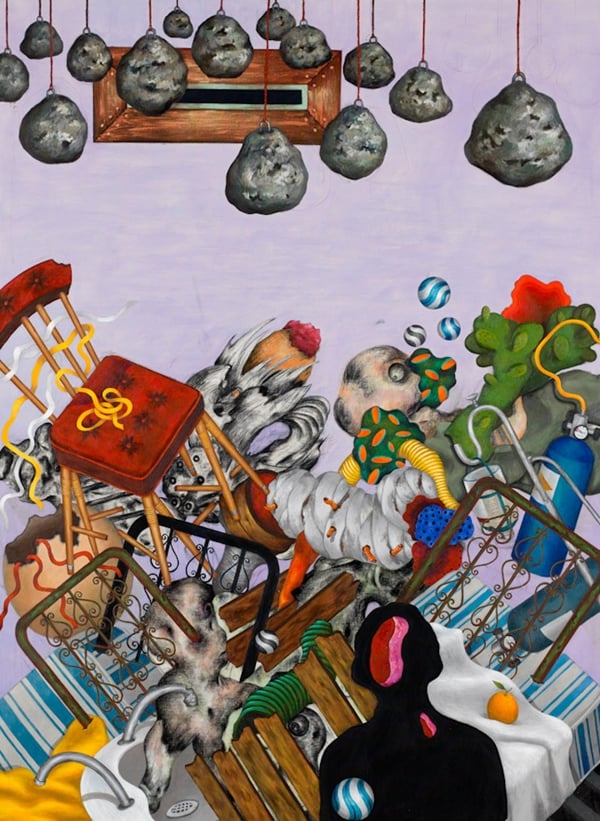
Courtesy the artist and Gladstone Gallery, New York.
Ahmed Alsoudani is ready for his closeup, again.
Two years ago, the Baghdad-born, New York-based painter made a splash with an impressive solo show of painstaking renderings of maimed, tortured, and brutalized figures at Haunch of Venison, Christie’s since-shuttered primary market gallery. Then an even bigger splash came along—Hurricane Sandy—and Alsoudani’s name faded from view as New York’s art world focused on storm recovery. On November 14, after a year spent developing a new body of less gory and more psychologically tense works, the artist’s first show with Gladstone, his new gallery, opens to the public.
“Before, I addressed the chaos and the violence [of everyday life] in a direct way,” Alsoudani tells artnet News, explaining his shift toward less graphic subject matter. “It has been two years and so many things have been happening. I have been working on this body of work since last October, and I’m more trying to capture the psychological aspect of fear and violence, more than capturing the scene itself.”
Ahmed Alsoudani, Untitled (2014).
Courtesy the artist and Gladstone Gallery, New York.
Indeed, the new paintings maintain the fragmented imagery and disorienting perspectives of his earlier work, and the attractive, counter-intuitive palette of bold colors. But they’re distinctly less bloody. The tension in these pieces is not caused by something that just happened, but by something that is about to happen.
“I’m trying to paint the feeling, which is a little bit harder, trying to capture that through a certain figuration that is a little bit more clear than in the previous body of work,” he says. “I’m trying to come up with a certain element that relates to those [paintings] I was working on before—I don’t want to really break free 100 percent from what I have done before—but evolving, using certain elements to build up on them and use them as a foundation.”
Ahmed Alsoudani, Untitled (2014).
Courtesy the artist and Gladstone Gallery, New York.
In place of bodies figuratively and actually blown apart, Alsoudani has been painting images that at first evoke the flotsam generated by a hurricane or tsunami. Buildings, pieces of furniture, chunks of machinery, and ambiguous shapes float in a delicate and ominous kind of balance, like a Jeff Koons Equilibrium tank filled with rubble. But as viewers parse these clouds and clusters of objects, recognizable forms and anthropomorphic figures begin to emerge. If Giuseppe Arcimboldo were alive today and working as a political cartoonist, his work would probably look something like Alsoudani’s paintings.
“I start with a clear idea and I try to build upon it; that’s why each painting will take a month, two months to finish,” he says of his studio practice. “Through this period I feel like I want to let the painting grow up organically, just watching it, adding certain things and erasing certain things. I know that the subject matter that I’m dealing with is very heavy, and I’d say there are a few seconds that are the first step between the viewer and the painting, and if you aren’t able to grab the viewer for these few seconds, to communicate with your painting, you will lose them, and you will lose them forever.”
Ahmed Alsoudani’s exhibition at Gladstone Gallery‘s 24th Street space opens November 14 and continues through December 20.